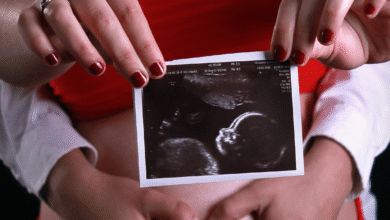Reasons? Air India Boeing 787 Dreamliner Crashes


More than 240 people died in a tragic crash involving an Air India Boeing 787 Dreamliner on June 12, 2025. The aircraft plunged into a college building minutes after takeoff from Ahmedabad. Only one passenger survived. Authorities launched a major investigation to find out what went wrong.
What caused the Air India Boeing 787 Dreamliner crash?
Air India Flight AI171 took off from Ahmedabad’s Sardar Vallabhbhai Patel International Airport at 1:38 p.m. on June 12, 2025. The plane headed toward London Gatwick. However, the aircraft lost altitude just after takeoff. The Boeing 787 crashed into a hostel building at B.J. Medical College, killing almost everyone on board and many people on the ground.
Eyewitnesses saw the aircraft flying low with its landing gear down. Some of them heard a loud noise before it slammed into the building. A pilot made a Mayday call right before the crash. Videos captured the moment of impact and showed the plane struggling to gain height.
How many people died in the Air India 787 crash?
The crash killed 241 people on board, including 230 passengers and 11 crew members. The impact also killed at least 28 people on the ground and injured many more. Most victims included medical students and staff living in the hostel.
Only one person survived. He sat in seat 11A and managed to crawl out of a broken emergency exit. Rescue teams found him alive, injured but conscious. He later told reporters he thought he would die but escaped in the last few seconds.

What type of plane was involved?
The aircraft involved in the crash was a Boeing 787-8 Dreamliner. Air India received the plane in 2014. Over the years, it flew many international routes, including nonstop flights from Seattle to Delhi.
Before the crash, the aircraft had completed over 41,000 hours of flying time. The Boeing 787 family holds a strong safety record and features lightweight materials, advanced systems, and quiet engines.
This incident marked the first time a Boeing 787 Dreamliner crashed with fatalities. It shocked the global aviation industry.
Did the plane have any technical problems?
At this point, authorities have not confirmed any mechanical fault. However, early evidence suggests the aircraft suffered a power or engine failure shortly after takeoff. Videos from the scene showed the landing gear and flaps still extended. These signs suggest the crew struggled to climb or stabilize the aircraft.
Investigators recovered the flight data recorder (FDR) and cockpit voice recorder (CVR) quickly. These “black boxes” will help determine exactly what went wrong. Experts from India, the U.S., and the U.K. are now examining the data.

Who is investigating the crash?
India’s Aircraft Accident Investigation Bureau (AAIB) is leading the investigation. The United States National Transportation Safety Board (NTSB), Federal Aviation Administration (FAA), and Boeing are assisting. Since Boeing manufactured the aircraft in the U.S., international rules require U.S. agencies to join the probe.
Experts from the U.K.’s Air Accidents Investigation Branch (AAIB) also joined because some passengers held British passports. The investigation will take several months, but authorities expect preliminary results in a few weeks.
How did people on the ground react?
Local residents rushed to the scene minutes after the crash. Many of them tried to help injured victims stuck in the rubble. Firefighters and police arrived quickly. They battled flames and thick smoke while rescuing people from the wreckage.
Volunteers helped medical workers by carrying injured people to nearby hospitals. The government sent in disaster response teams, and the Army joined the rescue operations. Hospitals worked nonstop to treat the wounded, and authorities set up emergency helplines for families.
How did Air India respond?
Air India released a statement expressing deep sorrow for the loss. The airline suspended all Dreamliner flights until further inspection. They offered full cooperation with the investigation and announced compensation for the families of the victims.
Tata Group, which owns Air India, promised to support rescue efforts and offer aid to affected families. The company also created a crisis response center to assist relatives of the passengers.
What safety actions did Indian authorities take?
The Directorate General of Civil Aviation (DGCA) launched an urgent safety review of all Boeing 787s in India. Officials ordered inspections on engines, flight control systems, hydraulics, fuel lines, and more. They instructed engineers to check aircraft before every flight and perform detailed checks within two weeks.
Airlines must now submit technical reports for each Dreamliner flight until investigators release the crash findings. DGCA promised to take strong action if they find faults in design, maintenance, or training.
How did this crash affect Boeing?
The crash damaged Boeing’s image worldwide. Stocks for Boeing dropped by 5% after the news. The company already faced criticism in past years over other aircraft issues, especially the 737 MAX crashes.
Boeing issued a statement of condolence and offered full support to the investigation. Engineers from Boeing joined the crash site and helped Indian authorities examine the wreckage.
This was Boeing’s first fatal crash involving a 787, so the company faces new questions about safety and quality control.
What impact did the crash have on global aviation?
Airlines around the world began checking their Boeing 787 fleets after the crash. Several countries increased oversight of Dreamliner operations. Some airports also introduced new emergency drills to prepare for low-altitude incidents.
Passengers became more cautious about flying. Aviation forums and social media saw a rise in public concerns about Dreamliner safety. Flight booking numbers slightly dipped in the days following the accident.
Despite this, experts say the Boeing 787 remains one of the safest planes in the world.

What did the survivor say?
The only survivor, a British man of Indian origin, described the horror in his own words. He said he felt the aircraft jolt suddenly. He remembered seeing smoke and hearing loud banging noises. When the plane hit the building, he got thrown toward the emergency exit.
He found the door already cracked open and crawled through the opening. He fell to the ground and escaped as fire engulfed the wreckage. Rescue workers found him in a state of shock but alive.
What happens next in the investigation?
Investigators are now:
- Analyzing black box data for engine power levels, pilot actions, and system failures.
- Interviewing air traffic controllers, maintenance staff, and the surviving passenger.
- Testing fuel quality and checking for possible bird strikes or foreign object damage.
- Reviewing training logs and aircraft maintenance records.
Based on findings, authorities may issue new rules for takeoff procedures, aircraft inspections, or crew protocols.
Conclusion
The Air India Boeing 787 Dreamliner crash shocked the world and caused one of the worst aviation disasters in Indian history. The incident killed hundreds, including passengers, crew, and civilians on the ground. Only one person survived.
Authorities continue to search for answers. Experts from multiple countries are working together to find out why this modern jet crashed just seconds after takeoff. India’s aviation authority took fast steps to boost safety and calm public fears. Boeing must now restore confidence in its Dreamliner fleet.
As the world waits for official results, this tragedy reminds us that even advanced planes need constant oversight and strict safety checks. Transparency, accountability, and international cooperation will play a key role in preventing such disasters in the future.
FAQs
1. Why do investigators take months to finish air crash reports?
Investigators must review black box data, radar logs, weather reports, and interview witnesses. They test wreckage parts and recreate events step-by-step. This detailed work ensures accurate findings that improve future safety.
2. Can passengers check aircraft safety before booking flights?
Yes. Travelers can check airline safety ratings from sites like AirlineRatings.com or Skytrax. They can also review aircraft models and maintenance records online before booking.
3. Does a crash mean Dreamliners are unsafe?
No. The Boeing 787 has a strong safety record with millions of safe flights. One crash doesn’t define the model. Authorities inspect each incident and ensure fleet-wide fixes, if needed.




